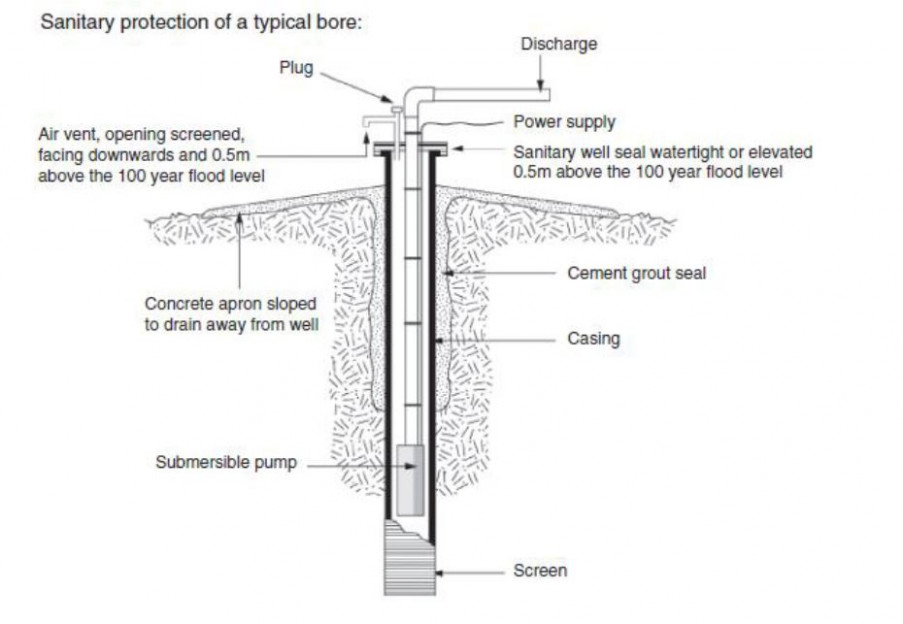An event such as an earthquake, flood or landslide can affect the safety and suitability of your drinking water.
If you are on a reticulated Council supply, the Council will usually issue a boil water notice until they have tested and confirmed that the water supply is safe.
If you have your own private water supply such as a bore, spring or rainwater tank the water may be contaminated or unsafe to drink without treatment.
- Use bottled water, your emergency stored water, or boil or disinfect the water.
- Use disinfected water to wash dishes, brush your teeth, wash your hands, wash and prepare food, make ice or make baby formula.
Treating drinking water
Correctly boil water by:
- Keeping it at a rolling boil in a saucepan for 1 minute or boiling in a kettle until it shuts off, to make sure bacteria are killed.
- If you suspect the water is contaminated with chemicals boiling will not make it safe to drink – only use bottled water.
Correctly disinfect water for drinking by:
- Adding 3/4 of a teaspoon (4 mL) of plain household bleach (Sodium Hypochlorite) with no perfume or surfactants for every 10 litres of clean water (a household bucket is usually 10 litres).
- Stir or shake the water well, and let it stand for 30 minutes before using it.
- Do not try to disinfect highly contaminated water with bleach, especially water that has been contaminated with sewage, as sewage contains some bugs that are not killed by chlorine. Boil it instead.
Checking your treatment system
If you have a treatment system already like filters and a UV system, check that it is working.
- Turbid dirty water can’t be treated so avoid taking water from streams or springs until they run clear again.
- Filters may be blocked with silt and dirt, remove them and clean them out or replace them.
- UV systems need power to work, check the power supply is safe before turning back on, check the indicator lights are on.
- If the UV equipment was under water the sleeve or lamp could be dirty or damaged. These are delicate and difficult to remove, consider asking your water treatment contractor to check it. If it has a transmissivity indicator it should be over 95%.
Rainwater tanks
- An above ground rainwater tank that has not been inundated with floodwaters or damaged should be safe for continued use. Check the lid is on and the tank is not damaged or leaking. Check your roof is clean.
- If your storage tank was inundated with floodwater the water inside will require disinfecting before drinking.
- Clean around the lid before opening. Remove any obvious sources of contamination from the tank first such as debris, pests or vegetation.
- If there is a lot of sediment at the bottom of the tank it can be siphoned off using a swimming pool vacuum cleaner or get a tank cleaning contractor to help.
- Tank water can be disinfected by adding plain household bleach (Sodium Hypochlorite) with no perfume or surfactants.
- Mix the required amount of bleach below into a bucket of water and add to tank. Mix thoroughly if possible. Let sit for 24 hours before drawing.
|
Tank size in litres (m3)
|
ml of household bleach to reach 1ppm
|
|
10,000 (10)
|
333
|
|
20,000 (20)
|
667
|
|
25,000 (25)
|
834
|
|
30,000 (30)
|
1,000
|
- Water can also be disinfected with swimming pool chlorine (calcium hypochlorite) at 65% available chlorine with no other additives. Calcium hypochlorite should be added at 15 grams per 1000 litres of water. The calcium hypochlorite should be added to a bucket of water and allowed to dissolve for 6 hours. Use the liquid from the top of the bucket and bury the sludge from the bottom of the bucket. Contact an Environmental Health Officer if you need assistance working out how much to add for your water tank.
- Other products are available from hardware stores and sold as Water Tank Treatment. Follow the instructions on the bottle.
Bores and wells
If you have a bore or well that was inundated with floodwater or soil, or has become dirty following an earthquake, it may be contaminated with bacteria and viruses and water taken from it should be boiled or disinfected until you can check it is safe.
Private water supplies are the responsibility of the homeowner or landlord of the property. If you supply other houses with water you are responsible for making sure it is clean and drinkable.
- Check your bore head, where the pipe comes out of the ground. It is often close to the pump but can vary from property to property.
- Check that the top of the bore is above water level and the air vent is above water level and clear of mud. A well protected bore head will look like this:

- Clear away any debris or mud from around the bore head back to the concrete or original ground level.
- Mix half a teaspoon of bleach in a 10 litre bucket of water and clean the bore head seal, vent and pipework and wash down the concrete surround. Turn on the taps and let run for a few minutes to flush out any dirty water.
- If your bore head is below ground and just a pipe extends out then floodwater is likely to have been around the bore head and possibly leaked in. Keep boiling or treating the water until you can prove it is safe by having the water tested.
Testing your water
If you want to test your water for bacterial contamination, it can be tested for e.coli as an indicator of contamination. A laboratory can do the test. Cawthron Institute in Nelson, 98 Halifax Street East, Nelson 7010 tel 03 548 2319 can provide the sterile sample pots and do the test. Cost is approximately $40.
- Keep boiling or treating the water until the test results come back with a satisfactory result.
- The safe limit for e.coli is zero, which may be written on the result as <1.
Treatment systems for water
Historically lots of households have drunk untreated water from wells, bores, springs and rain tanks. Nowadays new dwellings have to have a safe treated supply of water. If your supply is a shallow bore or rain or spring or river water, treatment is always recommended. If the supply is a very deep bore into a confined aquifer sometimes treatment is not required.
- If your pump is at ground level eg in a shed, your bore is no more than 6 metres deep as these types of pumps cant draw water deeper than that. This means it is shallow and should be treated before drinking.
- If your pump is submersible down the bore, the bore depth is likely to be much deeper and less affected by ground conditions. You should investigate how deep it is and whether it goes into an aquifer. Council may have some records of these bores.
Treatment is commonly provided by filters and a UV system that disinfects the water without any residual taste.
If you want to explore treatment systems, contact a water treatment company for guidance and a quote.
For further information
- If you or anyone in your family feels unwell, seek medical advice from your doctor.
- For further advice on private water supplies contact your Council: Tasman District Environmental Health on 03 543 8400 or Nelson City Environmental Health on 03 546 0200.
- Check out the website www.healthed.govt.nz and search for ‘water supply’ for useful publications on bores, tanks and treatment systems.

